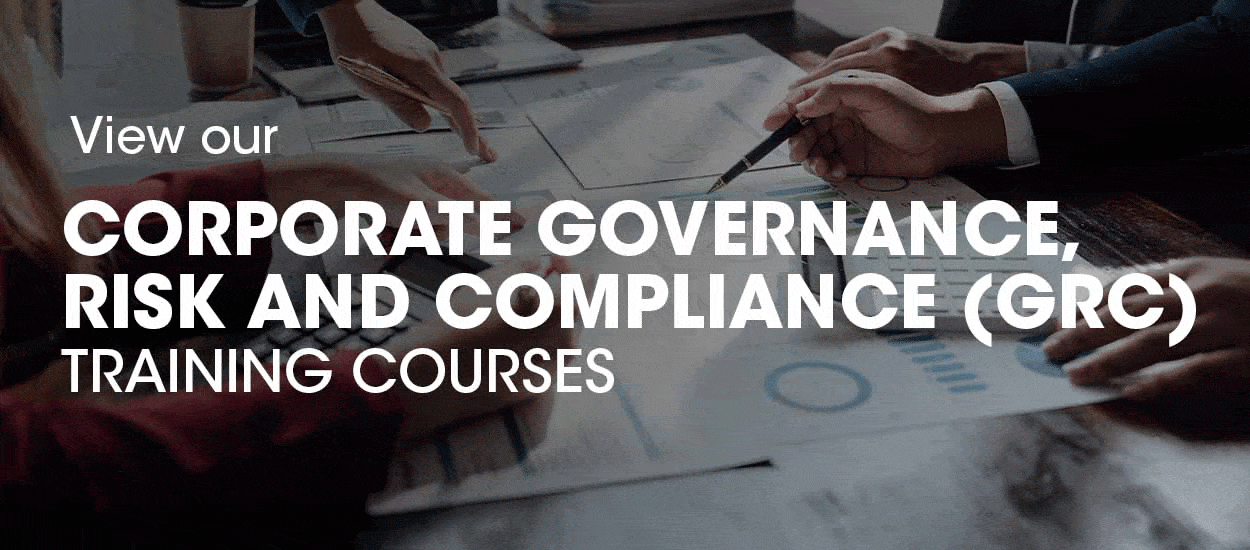
The Science Behind GRC Training for Modern Businesses
4 mins readGovernance, Risk, and Compliance (GRC) training is no longer just a checklist task for businesses—it’s a strategic necessity. From meeting regulatory requirements to fostering a sustainable corporate culture, GRC training stands as an essential building block for responsible and resilient organizations. But what does successful GRC training look like, and how can businesses ensure their programs deliver tangible results? The answer lies in the science behind training methodologies and their application to GRC-specific challenges.
This blog dives into the most recent research on GRC training and explores the science of cognitive learning, behavioral change, and motivation. It also provides actionable strategies to enhance your organization’s GRC programs and offers a glimpse into the future of GRC training and its broader implications.
What is GRC Training and Why Does It Matter?
At its core, GRC training equips employees and leaders with the knowledge and skills to effectively manage governance, minimize risks, and ensure regulatory compliance. With the rapid evolution of business environments, including new regulations, emerging technologies, and growing societal expectations, GRC training plays an increasingly strategic role in organizational success.
The Importance of GRC Training:
- Compliance: Ensure adherence to local and global regulations, reducing the risk of legal liabilities or reputational damage.
- Risk Mitigation: Equip employees to anticipate, identify, and react to potential risks before they escalate.
- Corporate Culture: Foster an ethical and transparent culture that aligns with organizational values and societal expectations.
- Sustainability: Strengthen governance frameworks that allow businesses to operate responsibly and sustainably.
While the importance of GRC training is recognized, developing a program that truly engages employees and achieves behavioral change requires an understanding of the science behind training methodologies.
Recent Research in GRC Training and Methodologies
To build effective training programs, it’s essential to leverage findings from recent studies. Here’s what the research tells us about the state of GRC training and the best ways to improve outcomes:
- Interactive Techniques Drive Engagement
A study conducted by Brandon Hall Group in 2023 found that GRC training programs with interactive elements, such as role-playing scenarios and game-based learning, achieved a 27% higher engagement rate compared to static lectures or webinars.
- Microlearning Boosts Retention
According to the Journal of Workplace Learning, breaking content into smaller, bite-sized modules (microlearning) improves knowledge retention by up to 50%. For GRC training specifically, shorter sessions with a clear focus ensure complex regulatory topics are absorbed more effectively.
- Personalization is Key
Research from Deloitte Insights emphasizes the importance of tailoring GRC training to specific roles within an organization. Employees who received personalized training relevant to their responsibilities displayed a 35% improvement in GRC compliance metrics.
- The Value of Consistency
Effective GRC training is not a one-and-done effort. Consistent reinforcement of principles (through refresher courses, workshops, or digital reminders) leads to sustained behavioral change, according to a 2022 report by the Harvard Business Review.
Understanding these findings creates a foundation for designing impactful GRC programs. But for training to truly succeed, it must incorporate key scientific principles.
The Science Behind Effective GRC Training
Creating successful GRC training solutions depends on blending scientific principles of learning, behavior, and motivation with organizational goals. Below we explore the three core pillars that drive effective training programs:
1. Cognitive Learning
Cognitive learning focuses on how individuals process and remember information. For GRC training, it’s crucial to present content in a structured and mentally stimulating manner. Key techniques include:
- Chunking Information: Breaking down dense regulations into smaller, digestible segments that are easier to understand and retain.
- Visual Aids: Infographics, videos, and other visuals can simplify complex topics such as compliance frameworks or risk assessment processes.
- Repetition: Repeated exposure to key concepts reinforces memory and reduces forgetting.
2. Behavioral Change
The ultimate goal of GRC training is to shift behavior—from “checking a compliance box” to fostering proactive decision-making. To encourage lasting change:
- Role-Playing Scenarios: Immersive exercises can simulate real-world risk or governance dilemmas, helping participants practice responses ahead of time.
- Behavioral Nudges: Subtle, consistent prompts (such as pop-up reminders in employee systems) keep GRC-related tasks top of mind without feeling intrusive.
- Positive Reinforcement: Recognizing and rewarding employees who demonstrate compliance or mitigate risks solidifies long-term behavioral change.
3. Motivation
Employee buy-in can be the biggest hurdle for GRC training. Motivation strategies can help overcome this challenge:
- Set Clear Goals: Demonstrate how GRC training benefits individuals, such as minimizing job-related risks or enhancing professional growth.
- Engage Leadership: Visible involvement from executives shows employees that GRC is a priority across all levels of the organization.
- Gamification Elements: Incorporating badges, points, or friendly competitions within training not only boosts engagement but also builds a sense of community.
By incorporating these principles, organizations can move beyond compliance to develop GRC programs that are both engaging and impactful.
Explore: Our Training courses in Dubai
Best Practices for Enhancing GRC Training in Your Organization
Looking to strengthen your GRC training initiatives? Here are some proven strategies to implement within your organization:
1. Align Training with Business Objectives:
Link GRC training to your organization’s broader goals. For example, show how enhanced compliance can open up opportunities for expansion into global markets.
2. Use a Blended Learning Approach:
Combine in-person workshops, e-learning platforms, and on-the-job exercises to cater to diverse learning preferences.
3. Collect Real-Time Feedback:
Deploy digital surveys immediately after training sessions to identify areas for improvement and ensure ongoing relevance.
4. Measure Success Metrics:
Track key performance indicators (KPIs) such as completion rates, post-training assessments, and compliance metrics to gauge the training’s impact over time.
5. Foster a Culture of Accountability
Instill a sense of responsibility at all levels. When employees feel personally accountable for risks and compliance, they are more likely to take the training seriously.
The Future of GRC Training and its Broader Impact
GRC training is moving toward a future where advanced technologies like AI and machine learning will play a major role. From adaptive learning platforms that personalize modules based on employee performance to real-time analytics that monitor compliance risks, organizations will be able to elevate training effectiveness to new heights.
Beyond individual businesses, robust GRC practices benefit society as a whole by promoting ethical decision-making, reducing environmental harm, and fostering fair business practices globally. Businesses that prioritize GRC today will thrive tomorrow, gaining a competitive edge while making a positive impact on the world.
Your next step can start today. Reconsider your current GRC training practices and identify areas for improvement. By prioritizing employee engagement and leveraging scientific methodologies, you can drive meaningful change across your organization.






